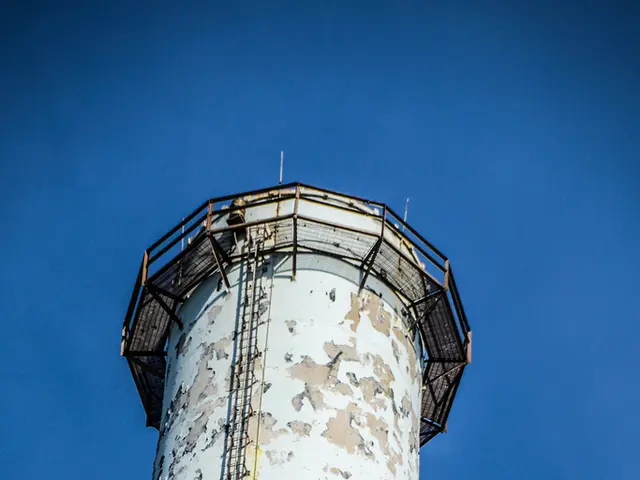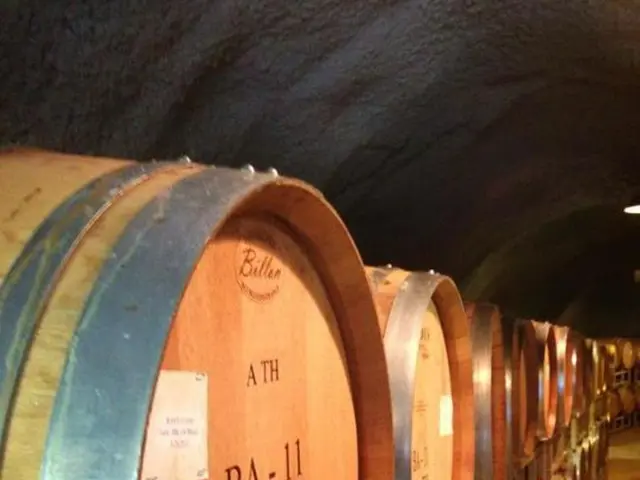Borkum's North Sea Gas Extraction Project: Latest Developments and Controversies
Gas extraction from Borkum Island according to plan by energy company - Gas output from Borkum production prior to anticipated levels fulfilled by energy company
Let's dive into the ongoing saga of the energy project off the North Sea coast, with a particular focus on gas extraction in the region around Borkum. Here's a lowdown on the developments, controversies, and highlights of this intriguing project.
Successful Start, Room for Growth
Approximately two months into the gas extraction project, energy conglomerate One-Dyas reported positive results. "Natural gas extraction from N05-A in the North Sea has been a hit so far," a company spokesperson announced, although no exact figures have been disclosed yet. Currently, about 35% of the extracted gas is being supplied to German households and businesses. With further development, the production capacity could increase to meet up to three percent of Germany's annual gas demand[1].
Geopolitical Implications
One-Dyas CEO Chris de Ruyter van Steveninck believes this project could help reduce Germany's dependence on nations like the USA and Russia, as the nation strives to meet as much of its energy demands locally as possible[1]. However, the project has sparked controversy among environmentalists and residents of the North Sea islands.
Legal Challenges and Environmental Concerns
Green activists, in conjunction with the German Environmental Aid, are challenging the gas extraction project in Lüneburg's Higher Administrative Court. Fears include damage to the UNESCO World Natural Heritage site, the Wadden Sea, and the potential impact on marine life in the North Sea[1].
Meanwhile, the dispute over the cable for supplying wind power to the extraction platform continues. Environmental groups including the German Environmental Aid have filed a lawsuit against the eight-kilometer-long cable, fearing irreversible destruction of protected underwater biotopes and reef structures. However, a recent ruling by the Administrative Court in Oldenburg deemed a water law permit for the submarine cable immediately enforceable[1].
The Road Ahead
The further procedure depends on the parties involved. According to the Ministry of the Environment in Hanover, work on laying the submarine cable may only commence when both an immediately enforceable water law installation permit and immediately enforceable nature conservation exemptions are attainable[1]. The environmental organizations and the competent authority have raised concerns about the impact on nature conservation exemptions, particularly with respect to reef structures. Stay tuned as this story continues to unfold!
Keywords:
- North Sea
- Borkum
- Gas Extraction
- Energy Project
- Energy Conglomerate
- North Sea Coast
- Schiermonnikoog
- Wadden Sea Island
- Wadden Sea
- USA
- Russia
- Chief
- Administrative Court
- Oldenburg
[1] Enrichment Data: The North Sea is a critical region for energy projects, with significant offshore wind capacity and a history of oil and gas extraction in the UK and Norwegian sectors. The focus is shifting towards renewable energy sources like wind and reducing reliance on fossil fuels. Environmental concerns, particularly regarding marine life and the impact of infrastructure projects, are common. Legal challenges and negotiations with stakeholders are frequent in such projects.
The energy conglomerate, One-Dyas, believes that the gas extraction project off the North Sea coast, specifically around Borkum, could potentially help Germany reduce its dependence on foreign suppliers such as the USA and Russia, as it aims to meet a larger portion of its energy demands locally (industry, finance). However, this project has sparked controversy among environmentalists and residents of the North Sea islands due to concerns about damage to the UNESCO World Natural Heritage site, the Wadden Sea, and potential impact on marine life (energy, oil-and-gas, environment). Legal challenges, particularly over the cable for supplying wind power to the extraction platform, are ongoing (law, industry, environment). The future of the project depends on the resolution of these issues (future, law).








